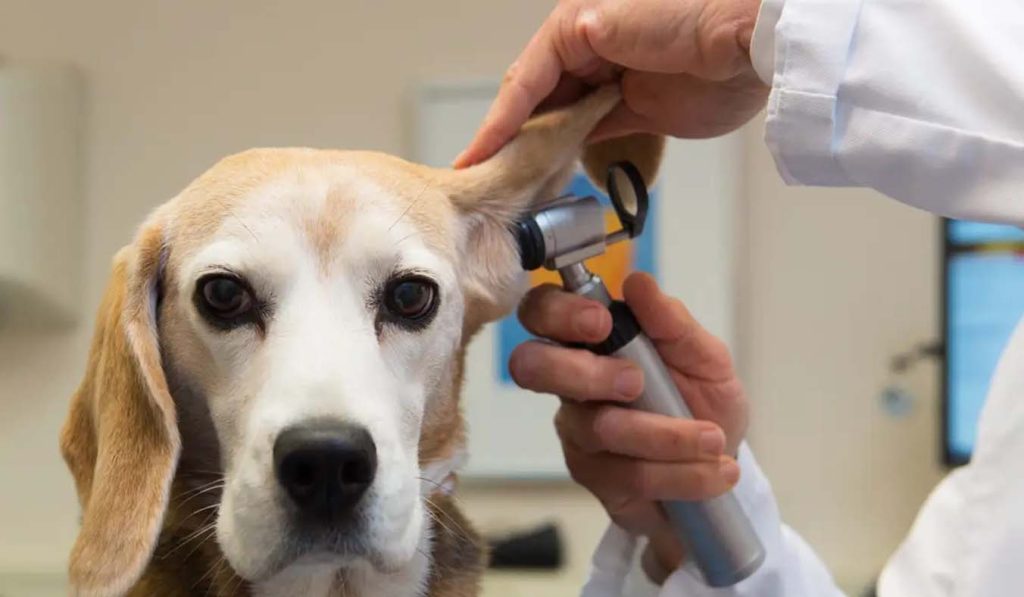In the realm of canine health, few diagnoses strike fear into the hearts of pet owners quite like osteosarcoma, commonly known as bone cancer. This insidious disease can wreak havoc on our beloved furry companions, but understanding its intricacies is the first step towards effective management and treatment.
Unveiling Canine Osteosarcoma: A Closer Look at Bone Cancer in Dogs
Canine osteosarcoma stands as a formidable adversary within the realm of veterinary oncology, casting a shadow over the lives of our beloved four-legged companions. It emerges as a malignant intruder, insidiously originating within the very bones that serve as the sturdy scaffolding of a dog’s body.
This aggressive cancer shows a penchant for targeting dogs in the prime of their lives, typically striking those in the middle-aged to older spectrum. Yet, it exhibits a particular affinity for larger breeds, including the majestic Great Danes, the robust Rottweilers, and the beloved Golden Retrievers. These noble creatures, renowned for their grace and resilience, find themselves thrust into a battle against a foe that knows no bounds.
The battlefield for this relentless struggle often lies within the long bones of the legs, where osteosarcoma takes root with malignant intent. These bones, once symbols of strength and agility, now harbor the insidious presence of cancer, compromising their structural integrity and robbing the affected dog of mobility and comfort. Yet, the reach of this pernicious disease extends beyond the confines of the legs, infiltrating other bones throughout the body with equal ruthlessness.
Imagine the silent agony of a dog as they grapple with the stealthy advance of osteosarcoma. Limping becomes a poignant testimony to the pain that gnaws at their core, while swelling near the affected bone serves as a visible reminder of the insidious presence lurking within. With each tentative step, the dog navigates a landscape fraught with uncertainty, their once-unwavering spirit tested by the relentless assault of disease.
Yet, amidst the darkness of this diagnosis, there shines a beacon of hope in the form of veterinary intervention. Through the expertise of dedicated professionals, treatment options emerge to confront the threat of osteosarcoma head-on. Surgical interventions aimed at excising the cancerous mass, coupled with adjunctive therapies such as chemotherapy and radiation, offer a multifaceted approach to combat this formidable foe.
In the face of canine osteosarcoma, vigilance is paramount. Early detection and swift action offer the best chance for effective treatment and improved outcomes. By remaining attuned to subtle changes in their furry companions and seeking prompt veterinary care when needed, pet owners can stand as steadfast allies in the fight against this devastating disease.
While the journey may be fraught with challenges, the bond between human and canine endures as a source of strength and resilience. Together, with unwavering determination and unwavering support, we navigate the stormy seas of canine osteosarcoma, guided by the unwavering hope for brighter days ahead.
Unraveling the Enigma of Canine Osteosarcoma: Exploring its Complex Causes

In the intricate landscape of veterinary oncology, the origins of canine osteosarcoma remain shrouded in mystery, yet a closer examination reveals a tapestry woven with diverse and interwoven threads of influence.
Genetic Predisposition:
At the heart of the puzzle lies the enigmatic role of genetics. Certain breeds, such as the majestic Great Dane, the regal Rottweiler, and the loyal Golden Retriever, bear the burden of a heightened predisposition to osteosarcoma. Within the intricate strands of their DNA lies the potential for this insidious disease to take root, a silent legacy passed down through generations.
The Specter of Rapid Growth:
Picture the whirlwind of puppyhood, where boundless energy and exuberance reign supreme. Yet, amidst the joyous chaos, lurks the specter of rapid bone growth—a double-edged sword that may sow the seeds of osteosarcoma later in life. As bones elongate and mature at an accelerated pace, the delicate balance between growth and stability becomes precarious, paving the way for the emergence of malignancy.
Trauma:
In the symphony of life, trauma plays a discordant note that reverberates through the years. Previous bone injuries, whether minor fractures or significant trauma, leave behind a legacy of vulnerability—a silent invitation for osteosarcoma to stake its claim. Like a scar etched upon the canvas of bone, these injuries serve as silent witnesses to the tumultuous journey of canine existence.
Environmental Intrigue:
Amidst the cacophony of modern living, environmental factors emerge as silent accomplices in the genesis of osteosarcoma. Exposure to radiation, whether from sources natural or man-made, casts a shadow of uncertainty over the delicate balance of cellular integrity. Similarly, certain chemicals lurking in the shadows of our industrialized world may sow the seeds of malignancy, their insidious influence permeating the very fabric of canine health.
In the intricate dance of causality, each factor plays its part in shaping the destiny of canine osteosarcoma. Yet, amidst the complexity, a singular truth emerges—the journey towards understanding and combating this formidable foe requires a multidisciplinary approach, guided by the unwavering commitment to unraveling the mysteries of canine health.
Deciphering Canine Cancer Symptoms: Unveiling the Telltale Signs
In the intricate tapestry of canine health, recognizing the subtle whispers of cancer amidst the cacophony of everyday life requires keen observation and unwavering vigilance. While the symptoms of cancer in dogs may masquerade as benign maladies, a closer examination unveils the telltale clues that hint at the presence of osteosarcoma, a formidable adversary lurking within.
Lameness:
Picture your canine companion, once agile and sprightly, now hobbled by an invisible weight that burdens their every step. Lameness or limping, particularly if it persists or worsens over time, emerges as a poignant indicator of underlying distress. It’s as if their body, in silent protest, rebels against the insidious invasion of osteosarcoma, each hesitant movement a testament to the pain that gnaws at their core.
Swelling and Masses:
Amidst the landscape of fur and flesh, a palpable anomaly emerges—a swelling or mass near the affected bone, a silent harbinger of the turmoil within. Like a hidden treasure waiting to be unearthed, these palpable reminders of malignancy beckon to the vigilant observer, urging them to delve deeper into the mysteries that lie beneath the surface.
Pain and Reluctance:
In the symphony of canine existence, pain becomes an unwelcome refrain—a discordant note that disrupts the harmony of daily life. Watch as your furry friend hesitates to put weight on the affected limb, their movements tentative and cautious, as if navigating a minefield of discomfort. Their reluctance speaks volumes, a silent plea for relief from the relentless assault of osteosarcoma.
Loss of Appetite and Lethargy:
Behold the subtle shifts in behavior—a once-ravenous appetite wanes, replaced by indifference or aversion to food. Lethargy descends like a heavy cloak, shrouding your dog in a veil of exhaustion and apathy. These silent sentinels of malaise, though easily overlooked, serve as poignant reminders of the insidious influence of cancer on body and spirit alike.
Fractures and Breaks:
In the realm of canine health, fractures and breaks without significant trauma emerge as red flags signaling potential trouble. Watch as the once-sturdy bones succumb to the silent erosion of malignancy, their structural integrity compromised by the relentless advance of osteosarcoma.
In the face of these subtle whispers of distress, swift action is paramount. Consult with your veterinarian promptly if you notice any of these symptoms in your dog, for early detection offers the best chance for effective treatment and improved outcomes. Together, with vigilant observation and unwavering advocacy, we stand as steadfast allies in the fight against canine cancer, guided by the unwavering commitment to safeguarding the health and well-being of our cherished companions.
Navigating Canine Cancer Treatment: A Compassionate Approach

In the labyrinthine journey of canine health, a diagnosis of osteosarcoma casts a shadow of uncertainty over the lives of our cherished companions. Yet, amidst the darkness, a beacon of hope emerges in the form of treatment options aimed at alleviating pain, improving quality of life, and potentially extending survival.
Surgical Intervention:
At the forefront of the battle against osteosarcoma stands the stalwart defender of surgical removal—limb amputation. While the prospect may seem daunting, this procedure often serves as the most effective means of curbing the progression of the disease and alleviating debilitating pain. Like a courageous knight facing the dragon of malignancy, your dog embarks on a journey of resilience and healing, guided by the skilled hands of veterinary expertise.
Adjuvant Therapies:
Beyond the realm of surgery lies a plethora of adjunctive therapies poised to bolster the fight against osteosarcoma. Chemotherapy, with its arsenal of cytotoxic agents, targets any remaining cancer cells with precision and determination, reducing the risk of recurrence and enhancing the chances of long-term survival. Similarly, radiation therapy harnesses the power of focused radiation beams to obliterate malignant tissue, offering yet another weapon in the arsenal against this formidable foe.
Collaborative Decision-Making:
In the labyrinth of treatment decisions, collaboration between caregiver and veterinarian emerges as the guiding light illuminating the path forward. Together, armed with a deep understanding of your dog’s overall health, age, and individual circumstances, you navigate the complex terrain of treatment options with clarity and compassion. Each decision is weighed carefully, with the best interests of your furry companion at the forefront of every deliberation.
Palliative Care and Supportive Therapies:
Amidst the rigors of treatment, palliative care emerges as a beacon of comfort and solace, offering respite from the storm of pain and discomfort. Pain management protocols, tailored to the unique needs of your dog, provide relief from the relentless assault of osteosarcoma, allowing them to navigate the journey with dignity and grace. Supportive therapies, ranging from acupuncture to physical rehabilitation, complement the treatment regimen, nurturing body and spirit alike.
In the crucible of canine cancer treatment, compassion reigns supreme, guiding every decision and action with unwavering empathy and understanding. Through the synergy of surgical intervention, adjuvant therapies, collaborative decision-making, and palliative care, we embark on a journey of healing and hope—a testament to the enduring bond between human and canine, forged in the crucible of adversity.
While a diagnosis of osteosarcoma in dogs can be daunting, advances in veterinary medicine offer hope for effective management and treatment. By staying vigilant for symptoms, seeking prompt veterinary care, and exploring all available treatment options, pet owners can provide their canine companions with the best possible chance for a happy and comfortable life, even in the face of this challenging disease.



